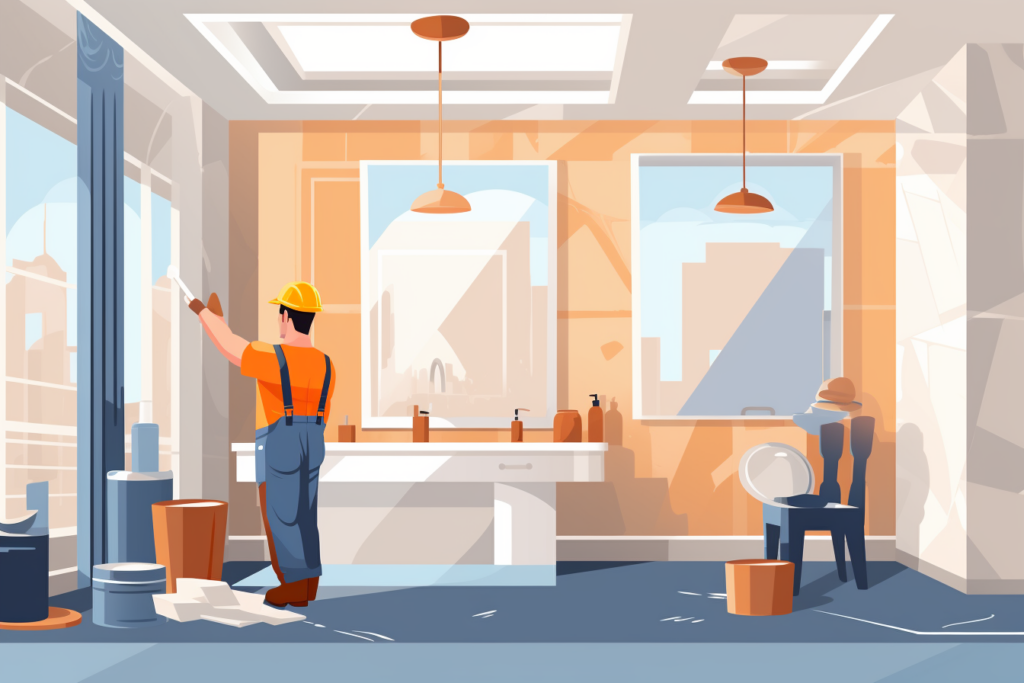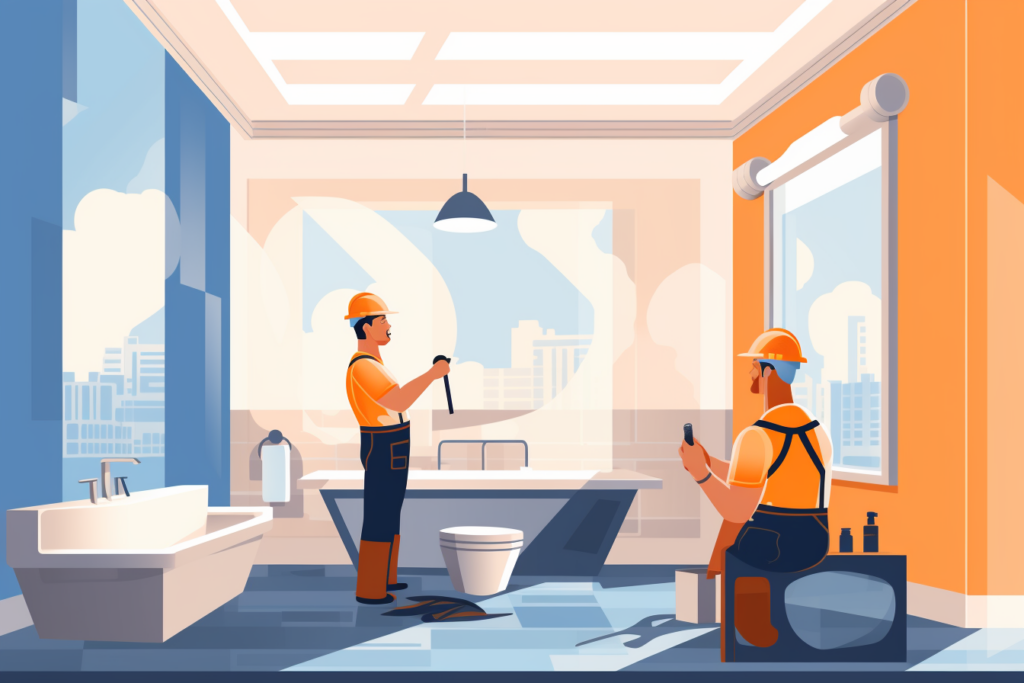Homeownership brings pride and joy, but it also comes with responsibilities. One of the most common challenges homeowners face is the need for occasional repairs and maintenance.
Whether it’s a leaky faucet, a squeaky door, or a cracked tile, having the skills and tools for DIY home repairs can save you time and money. In this comprehensive guide, we’ll explore the art of DIY home repairs, from essential tools to key techniques, empowering you to tackle everyday household issues confidently.
Empowering Homeowners
DIY home repairs empower homeowners to take control of their living spaces. Instead of relying on professionals for every issue, you can address common problems on your own, saving time, money and hassle.
Saving Money
DIY repairs can significantly reduce maintenance costs. You avoid labor fees and can shop for materials strategically by performing tasks yourself.
Each successful DIY repair also builds your skills and confidence. Over time, you’ll find yourself tackling more complex projects with ease.
The Toolbox Basics
Every DIY enthusiast should have a basic toolbox, including essential items like a hammer, screwdrivers, pliers, tape measure, utility knife, and an adjustable wrench.
Specialized Tools for Specific Tasks
Depending on the type of repairs you plan to tackle, you may need specialized tools such as a pipe wrench, a multimeter, a stud finder, a hacksaw, or a power drill.
Safety Gear
Don’t forget safety gear, including safety glasses, gloves, ear protection, and a dust mask. Protective gear is crucial for keeping you safe during repairs.
Key Techniques for Successful DIY Repairs

Here are a few key techniques to practice for a successful DIY home repair.
Identifying the Problem
Accurately diagnosing the issue is the first step in any repair. Research and observation can help you pinpoint the problem before you start working.
Preparing Your Workspace
A clean and organized workspace is essential for efficiency and safety. Clear the area of clutter, and ensure you have adequate lighting.
Understanding Materials and Surfaces
Different materials require different approaches. Understand how to work with wood, drywall, metal, and other common building materials.
Here are a few other areas to make sure you understand before tackling any new project:
- Precise measurements and accurate cuts are critical for successful repairs. Invest in quality measuring tools and learn to use them effectively.
- Learning to fasten and secure components properly is key. This includes skills like drilling pilot holes, driving screws, and using anchors.
- For many repairs, the finishing touches matter. Learn how to paint, stain, or finish surfaces to match the existing decor.
Common DIY Home Repairs
Below are the most common DIY home repairs for all levels of DIYers.
Fixing a Leaky Faucet:
A leaky faucet is a common annoyance. You’ll need to turn off the water supply, take apart the faucet, and replace the worn-out parts or the entire cartridge.
Repairing a Running Toilet:
A running toilet wastes water and money. Understanding the toilet’s components and replacing a faulty flapper or fill valve can usually solve the problem.
Patching Drywall:
Small holes and cracks in drywall are easily repairable with patching compound and a putty knife. Larger holes may require a patch.
Replacing a Broken Tile:
Removing a broken tile and installing a new one can restore the appearance of your floors or walls. Proper adhesive and grouting are essential.
Dealing with Squeaky Doors:
Squeaky hinges or doorframes can be silenced with the application of lubricant or the replacement of worn-out parts.
Unclogging Drains:
Simple clogs in sinks and showers can often be cleared with a simple plunger or a drain snake. Chemical drain cleaners should be used cautiously.
Repairing a Damaged Window Screen:
Tears or holes in window screens are easily repaired with a patch kit or by replacing the damaged screen material.
Beyond the Basics: Intermediate DIY Repairs
If you want to up your DIY skills, here are some common intermediate repairs homeowners often face.
Installing a Ceiling Fan:
Ceiling fan installation involves electrical work. Ensure you turn off the power, follow instructions carefully, and use the appropriate electrical tools.
Replacing a Light Fixture:
Replacing a light fixture is a great way to update your home’s aesthetics. Always follow safety procedures when working with any electrical connections.
Fixing a Leaky Roof:
Roof repairs can range from minor patching to more extensive shingle replacement. Safety is paramount when working on a roof, and consider professional help for major repairs.
Installing Crown Molding:
Crown molding can add elegance to your home. Precise measuring, cutting, and attaching are essential for a professional finish.
Replacing a Door Lock:
Replacing a door lock can enhance security. Follow manufacturer instructions and ensure the new lock is compatible with your door.
Safety First: Tips for Safe DIY Repairs
Before beginning any project, safety should be taken into consideration. Here are a few tips to get you started. Always wear appropriate safety gear, including safety glasses, gloves, ear protection, and dust masks, as needed.
Working with Electricity: When working with electrical repairs, turn off the power at the breaker box, use non-contact voltage testers, and follow electrical safety guidelines.
Handling Chemicals and Solvents: Be cautious when using chemicals and solvents. Read and follow safety instructions on labels and consider proper ventilation when working with fumes.
Ladders and Scaffolding: Secure ladders and scaffolding properly, and always maintain three points of contact when climbing.
Proper Tool Usage: Learn how to every tool correctly to prevent accidents. Keep tools in good condition and replace damaged ones promptly.
Knowing When to Call a Professional
While DIY repairs are empowering and cost-effective, some situations call for professional assistance:
Projects involving major structural changes, extensive electrical or plumbing work, or dangerous tasks like roofing should be left to professionals.
Legal and Permit Requirements:
Some repairs may require permits or adherence to local building codes. Professionals are well-versed in these regulations.
Time and Expertise Constraints:
If a repair is time-sensitive or beyond your current skill level, hiring a professional ensures a swift and successful resolution.
Building Your DIY Repair Skills
Take advantage of DIY books, online tutorials, and instructional videos to enhance your skills and learn new techniques.
Start small, give yourself some grace to build confidence, and gradually take on more complex repairs as you gain experience.
Don’t hesitate to seek advice from experienced DIY enthusiasts or consider joining a local DIY club or community for hands-on learning.
Mastering the Art of DIY Home Repairs
Becoming proficient in DIY home repairs is not only practical but also rewarding. As you develop your skills, you’ll find that you can confidently address common household issues and save money in the process.
Safety should always be a priority, and it’s wise to consult with professionals for complex or potentially hazardous tasks. With the right tools, techniques, and a can-do attitude, you’ll be well-equipped to tackle a wide range of home repair projects and pridefully maintain your living space. Happy repairing!
You might also be interested in:25 Ways To Use Bi-Fold Closet Doors




